If you’ve ever suffered from breakouts on your forehead, nose, and chin, then you’ve likely experienced T-zone acne. It can be painful, uncomfortable, and challenging to treat. In this article, we’ll explore what T-zone acne is, its causes, and treatments to help you get it under control.
What is T-Zone Acne?
T-zone acne is characterized by whiteheads, blackheads, and pimples that affect the forehead, nose, and chin. This area is one of the most common places for breakouts because it has a high concentration of sebum glands. These glands produce an oily substance that can clog pores, especially in people with excess sebum production. The forehead, nose, and chin are also more prone to bacteria contamination because we touch them more often than other face parts.
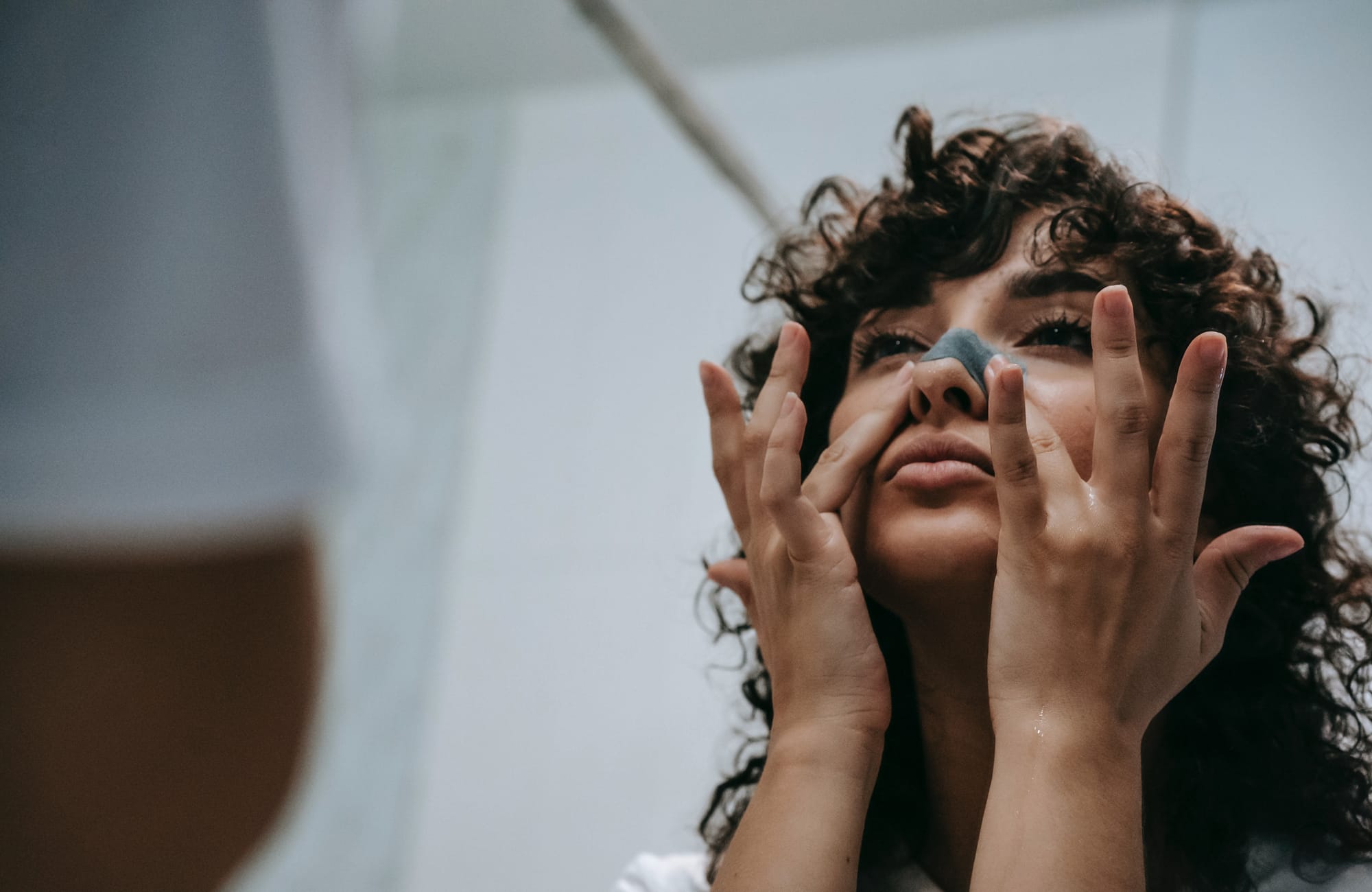
Causes of T-Zone Acne
The leading causes of T-zone acne include hormonal imbalance, bacteria overgrowth, and excess oil production. Besides, certain lifestyle factors, such as diet, stress, and choice of skin care products, can make it worse.
Hormonal Imbalance. During the menstrual cycle, puberty, hormone replacement therapies, pregnancy, and menopause, the body produces more androgens, which can cause an increase in sebum production. This can lead to clogged pores and acne.
Bacteria Overgrowth. The skin is home to a variety of bacteria. When the levels of bacteria on the skin become unbalanced, it can lead to breakouts. Bacteria can also become trapped in clogged pores, leading to inflammation and infection.
Excess Oil Production. The sebaceous glands in the T-zone produce an oily substance called sebum. Excess sebum can clog pores and trap bacteria, leading to breakouts.
Lifestyle Factors. Diet, stress, and choice of skin care products can also affect the skin. Eating food high in sugar can cause inflammation and lead to breakouts. Stress can trigger the body to give rise to more androgens, increasing oil production. And finally, using comedogenic beauty products can clog your pores and cause acne.
How to Get Rid of T-Zone Acne?
T-zone acne can be tricky, as a combination of factors often causes it. You should address all or at least most of them if you want a positive result.
Change Your Lifestyle
Improve Diet
Your habits don’t develop overnight; you cultivate them for years. Thus, if you have been used to eating sugar for a long time, it will be challenging for you to give all sweets up. Unfortunately, there is no magic way, and you must find the strength to change your diet. Otherwise, you’ll keep getting pimples on your forehead, nose, and chin, even with amazingly effective skin care products. Well, what to eat to get rid of T-zone acne? You should eat whole, unprocessed foods free from added chemicals, preservatives, and artificial ingredients. It typically emphasizes various fruits, vegetables, lean proteins, and whole grains and limits sugar and saturated fat.
Reduce Stress
When you are stressed, your body produces a hormone called cortisol, which increases sebum production and causes inflammation. This can lead to clogged pores and the development of acne. Additionally, stress can lead to impulsive behaviors, such as picking at the skin or not following a regular skincare routine, which can also contribute to breakouts. How to handle it? You should exercise regularly, get enough sleep, practice deep breathing, and learn to say “no” when necessary.
Choose Non-Comedogenic Beauty and Skin Care Products
Non-comedogenic means that a product contains ingredients that won’t clog the pores and lead to breakouts. This is especially important for people with oily acne-prone skin. How do you know if beauty or skin care products are pore-clogging ingredients free? This information can be presented on the label, but it is safer to check the list of ingredients by yourself. To get more info, read the article – "Pore Clogging Ingredient Checker: Must Read if Acne-Prone."
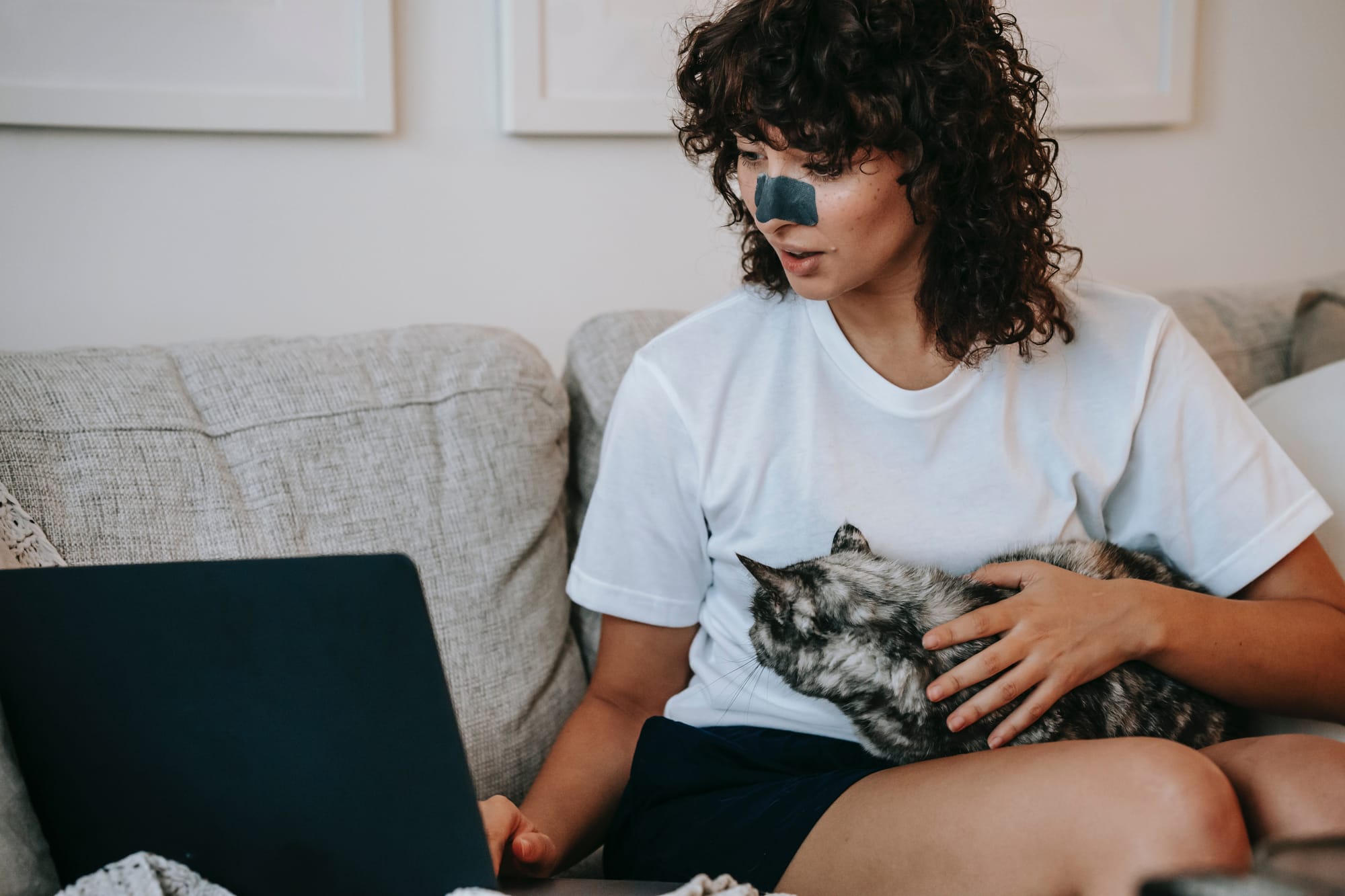
Treat T-Zone Acne with OTC
Salicylic Acid
Salicylic acid is a type of beta-hydroxy acid (BHA) that is commonly used as an acne treatment. When applied to the skin, it controls excess sebum production, peels away dead cells, and clears out clogged pores. Besides, this ingredient has anti-inflammatory properties that can help to reduce redness and inflammation associated with acne. You should use it as directed and be aware that it may also remove too much sebum, resulting in dryness and irritation.
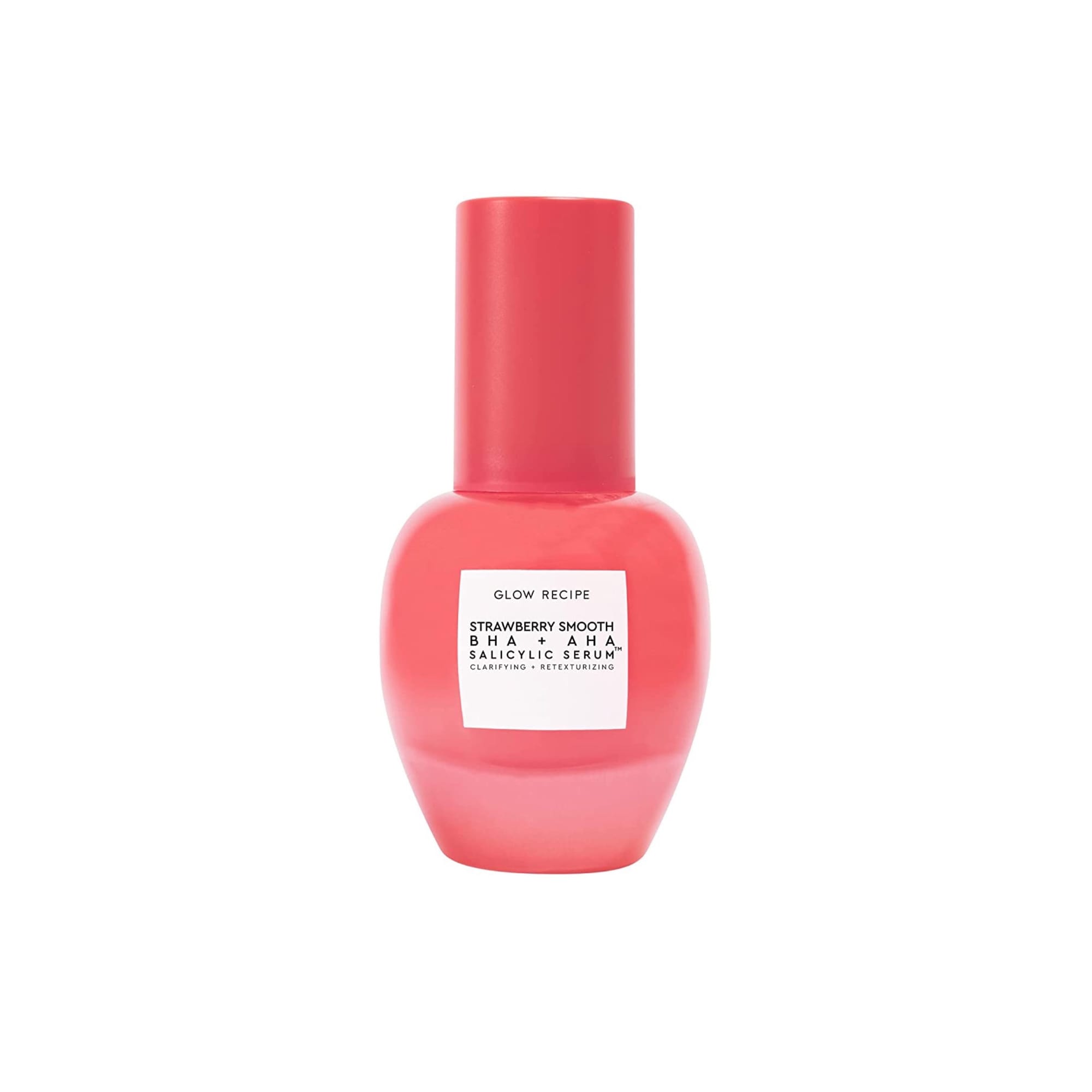
Glow Recipe Strawberry Smooth Serum is a magic cocktail to get clear skin without acne. It is a bit pricey but reasonable because this lovely bottle is infused with one of the most effective ingredients. It combines 2% salicylic acid with mandelic acid, azelaic acid, succinic acid, and even strawberry extract. Together, they keep the oil in check, refine pores, clear breakouts, and gently calm sensitized skin. Vegan. This product is free of parabens, mineral oils, and synthetic fragrances.
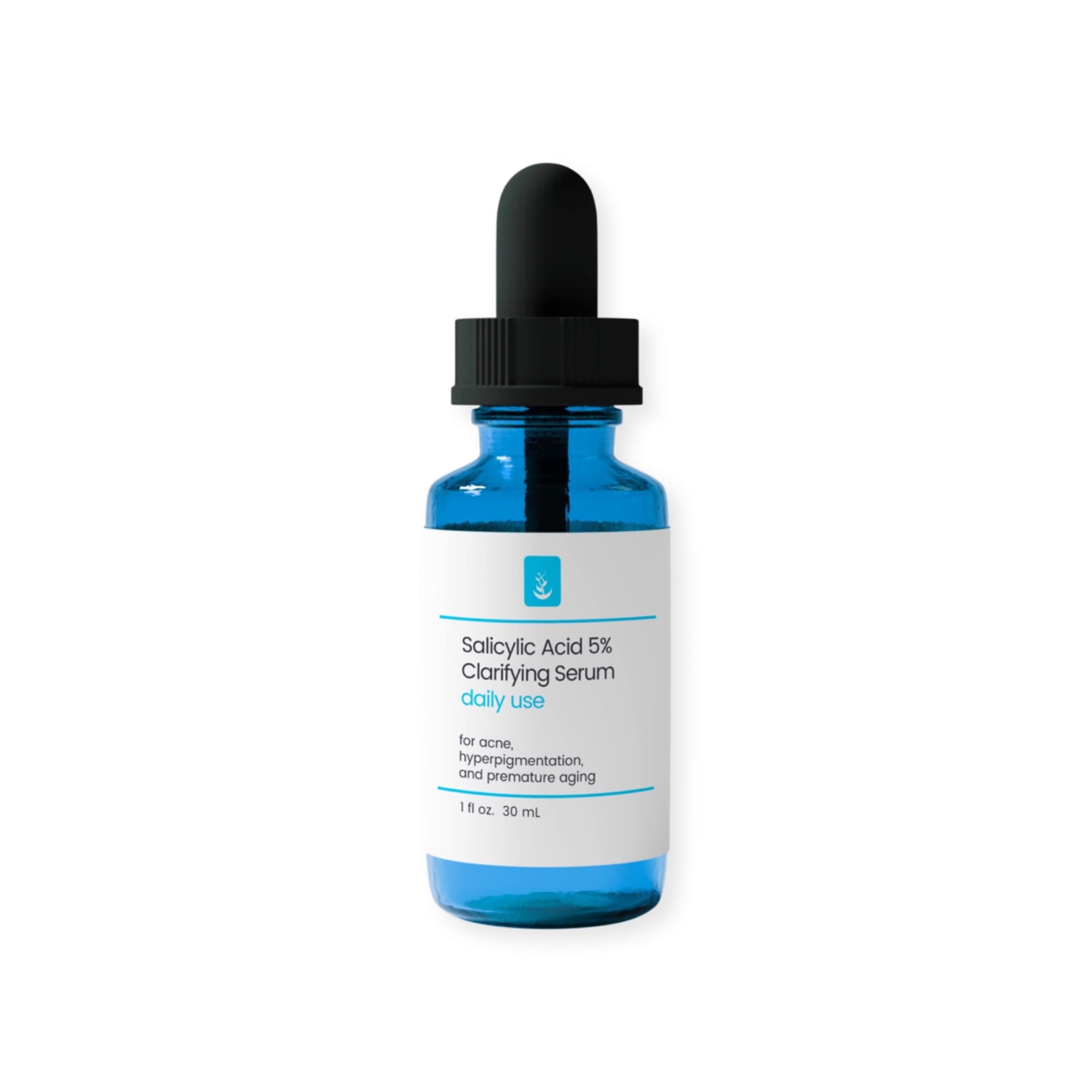
This product is not exactly a serum, but it is a light chemical peel due to the concentration of active ingredient (5% salicylic acid). So, keep in mind it is not a leave-in formula. You need to apply it to clean, dry skin for 2-5 minutes and then rinse it off. Based on the numerous customer reviews, the result is just fantastic! How does it work? It helps unbind dead cells and resurfaces the newer layer of the skin. After the first application, your skin will be smoother and brighter, and after several uses, you will see a dramatic improvement in your T-zone acne.
Benzoyl Peroxide
Benzoyl peroxide is a commonly used treatment to clear clogged pores and kill acne-causing bacteria. However, it can also cause dryness, peeling, and redness, so it’s essential to start with a low concentration and gradually increase it as your skin becomes more accustomed to it. For this reason, we recommend using a soothing moisturizer to reduce these unpleasant side effects.
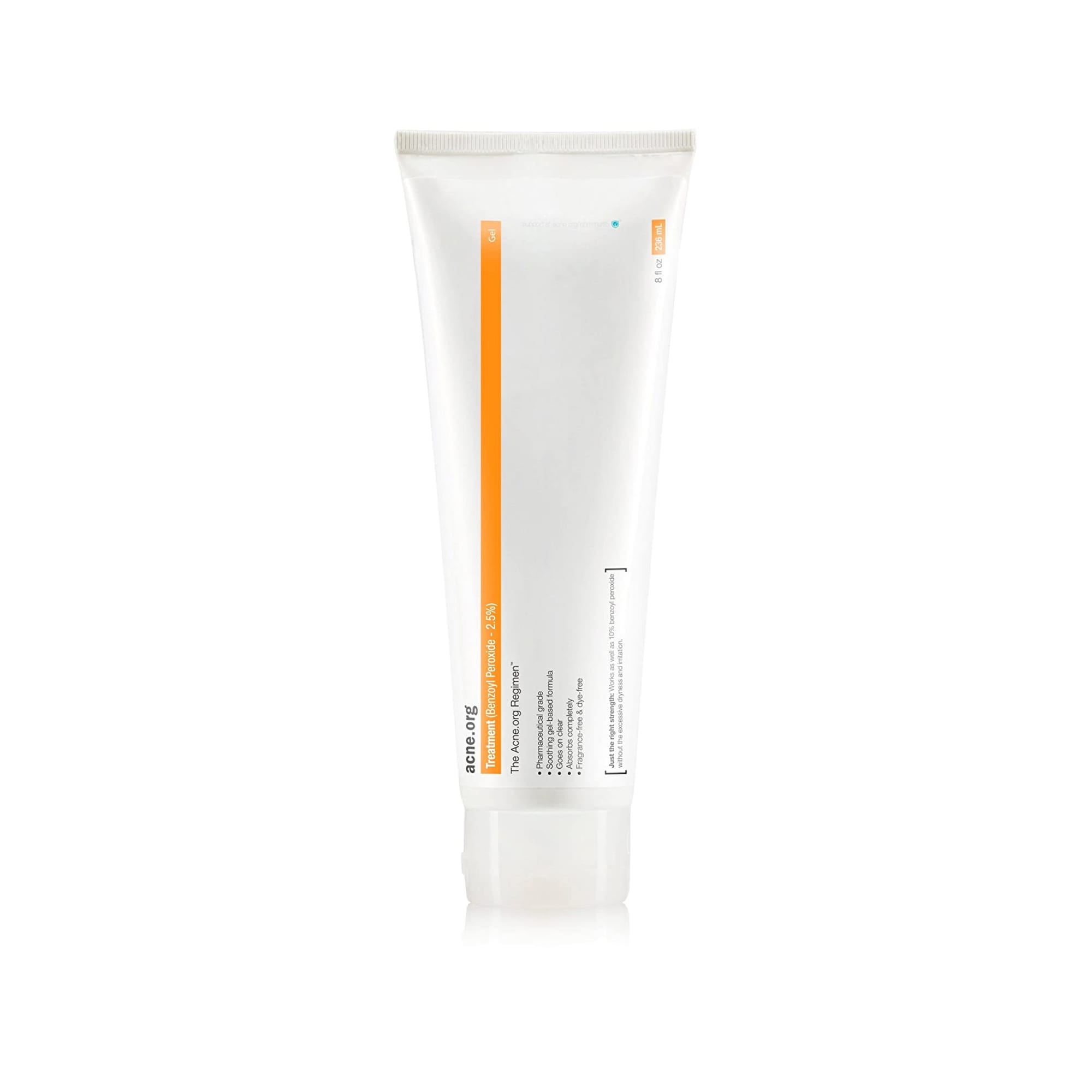
Acne.org Treatment is what you should try if the other products with salicylic acid don’t work on your skin. This gel spreads easily and won’t “ball up” with other skin products. Its main active ingredient is 2.5% benzoyl peroxide, which is excellent to start with and reduces the risk of irritation. Fragrance- and dye-free. It has a slight medicinal smell that goes away quickly. Give it a try, and you will be amazed at how quickly your skin gets clear.
Niacinamide
Niacinamide, a form of vitamin B3, is not a first-line treatment for acne but is used alongside anti-acne products for added visible skin benefits. It combats inflammation and reduces redness. Besides, this ingredient shrinks enlarged pores and improves the appearance of acne scars. This ingredient is generally considered safe and can be used by people with sensetive skin. You can combine it with salicylic acid or benzoyl peroxide as they complement each other.
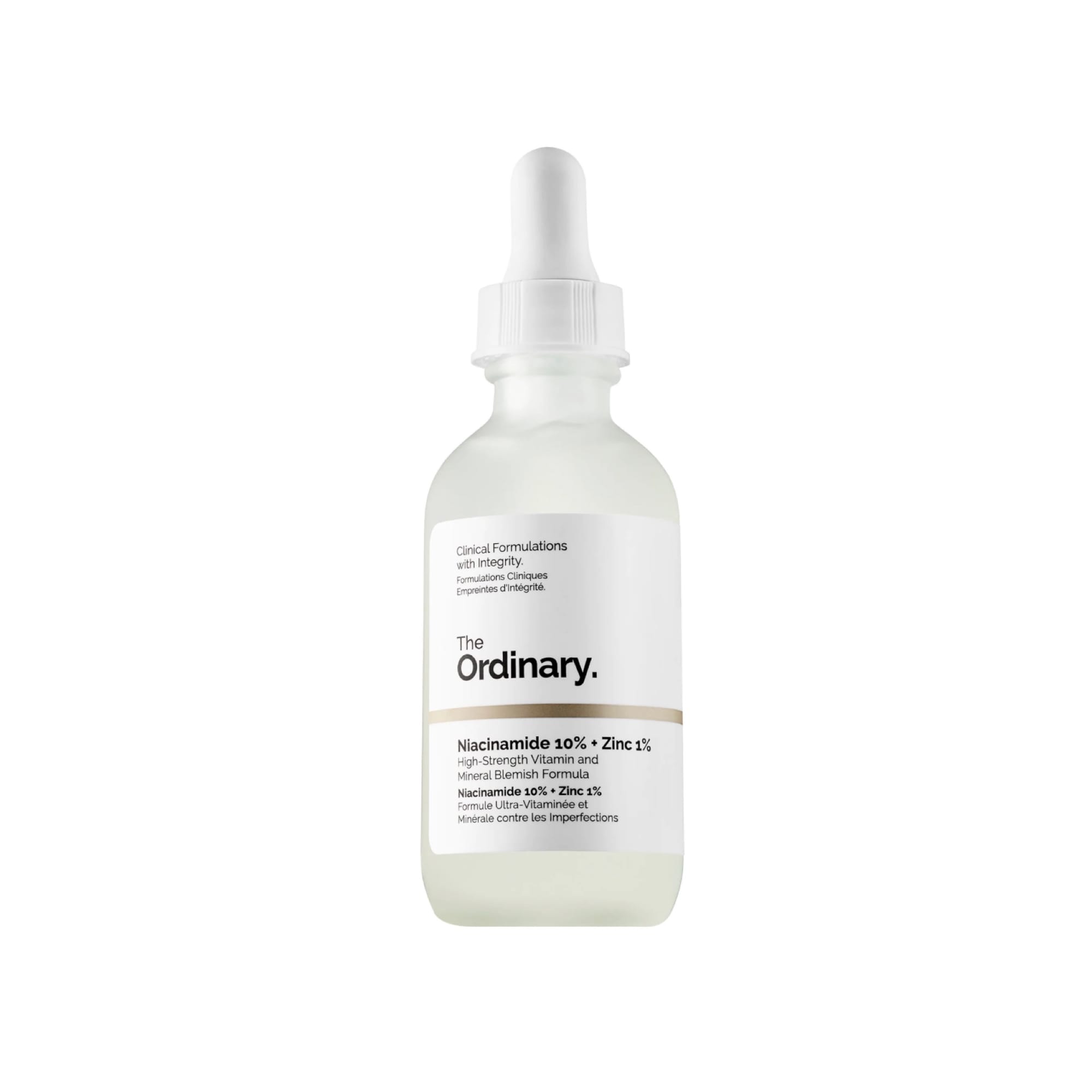
The Ordinary Niacinamide 10% + Zinc 1% Serum is a time-tested product. Affordable. This serum suits any skin type, but we recommend being careful for those with dry skin. Due to zinc in its formula, it has a dryness effect. Overall, this product makes your skin feel clean and soft after just a few days.
Ask for a Professional Help
If you’re experiencing frequent or severe acne breakouts, you better seek professional help. Your dermatologist can help you develop a personalized treatment plan tailored to your specific needs. The specialist will ask about your medical history, symptoms, and other relevant information. Based on the examination, you will get one or more of the following treatment options:
- Topical Medications: These include creams, gels, or spot treatments containing retinoids or antibiotics.
- Oral Medications: These include antibiotics, hormonal medications, or oral retinoids. They are used in more severe cases or when topical treatments are ineffective.
- Light-Based Therapy: This includes laser or light therapy that can help decrease inflammation and improve the skin’s overall appearance.
- Chemical Peels: These treatments use chemicals to remove the outer layers of the skin, revealing new, healthy skin underneath.
- Extractions: This treatment involves the removal of blackheads and whiteheads with the use of a special tool or by manual extraction. You can try it at home. Find more info in this article – “How to Do Manual Blackhead Extractions at Home?”
- Microdermabrasion: This gentle exfoliating treatment uses fine crystals and a vacuum to remove dead skin cells. It can help unclog pores and reduce the appearance of acne scars.

